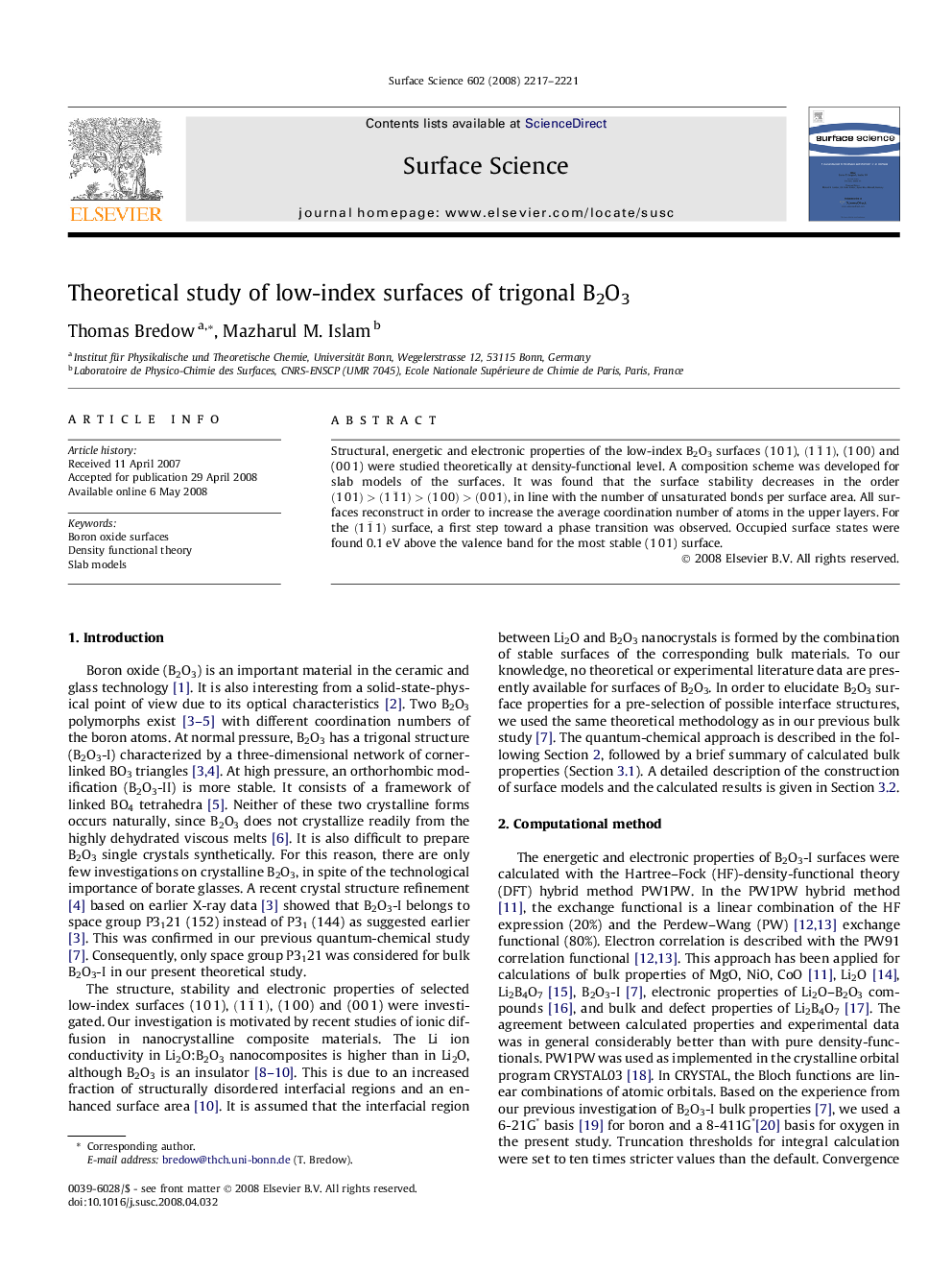| Article ID | Journal | Published Year | Pages | File Type |
|---|---|---|---|---|
| 5424544 | Surface Science | 2008 | 5 Pages |
Abstract
Structural, energetic and electronic properties of the low-index B2O3 surfaces (1 0 1), (11¯1), (1 0 0) and (0 0 1) were studied theoretically at density-functional level. A composition scheme was developed for slab models of the surfaces. It was found that the surface stability decreases in the order (101)>(11¯1)>(100)>(001), in line with the number of unsaturated bonds per surface area. All surfaces reconstruct in order to increase the average coordination number of atoms in the upper layers. For the (11¯1) surface, a first step toward a phase transition was observed. Occupied surface states were found 0.1 eV above the valence band for the most stable (1 0 1) surface.
Keywords
Related Topics
Physical Sciences and Engineering
Chemistry
Physical and Theoretical Chemistry
Authors
Thomas Bredow, Mazharul M. Islam,
